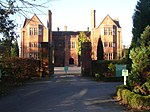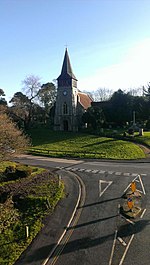Shirrell Heath
Hampshire geography stubsVillages in Hampshire
Shirrell Heath is a village and top of a modest escarpment of the South Downs National Park in south Hampshire, England. Shirrell Heath, and its neighbouring village, Waltham Chase are part of Shedfield parish. It is in the civil parish of Shedfield. The General Stores in the village was run for many years by the Tucker family. The Sub Post Office was run by the Misses Watson, and then passed to the Simpson family, and was open at least until the early 1990s The local Public House, called the Prince of Wales, was closed in 2012. There is a Methodist chapel in the centre of the village.
Excerpt from the Wikipedia article Shirrell Heath (License: CC BY-SA 3.0, Authors).Shirrell Heath
Hospital Road, Winchester Shedfield
Geographical coordinates (GPS) Address Nearby Places Show on map
Geographical coordinates (GPS)
| Latitude | Longitude |
|---|---|
| N 50.9254 ° | E -1.1862 ° |
Address
Hospital Road
Hospital Road
SO32 2JR Winchester, Shedfield
England, United Kingdom
Open on Google Maps







